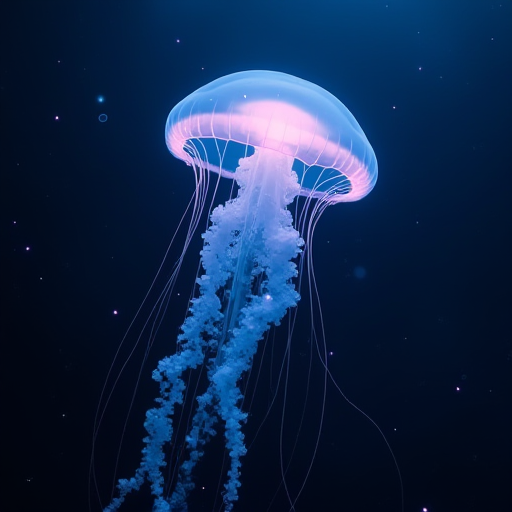
Why Do Jellyfish Glow in the Dark?
Jellyfish are among the most fascinating marine creatures, captivating the imagination of scientists and ocean lovers alike. One of their most intriguing features is their ability to glow in the dark, a phenomenon scientifically known as bioluminescence. This natural light display is not only mesmerizing but also serves various functional purposes for jellyfish. In this article, we will delve into the reasons behind this glowing attribute, the science that drives it, and its significance in the marine ecosystem.
The Science Behind Jellyfish Bioluminescence
Bioluminescence is the production and emission of light by a living organism. It occurs through a chemical reaction within the body of the organism. In jellyfish, this reaction typically involves a light-emitting molecule called luciferin and an enzyme called luciferase. When luciferin is oxidized by luciferase, it produces light.
Key Components:
- Luciferin: The substrate that emits light when oxidized.
- Luciferase: The enzyme that catalyzes the oxidation of luciferin.
- Photoproteins: In some jellyfish, proteins such as aequorin can also trigger light production when they bind with calcium ions.
The emitted light can vary in color, but it is often blue or green due to the absorption characteristics of seawater, which transmits these wavelengths most efficiently. This is why most marine bioluminescent organisms, including jellyfish, exhibit blue or green luminescence.
Why Do Jellyfish Glow?
1. Defense Mechanism
One of the primary reasons jellyfish glow is for defense. The sudden burst of light can startle predators, providing the jellyfish with an opportunity to escape. Some species can even release bioluminescent slime or particles, creating a glowing cloud that confuses predators and diverts their attention away from the jellyfish.
2. Camouflage
In the deep sea, where sunlight is scarce or absent, bioluminescence can help jellyfish blend into their environment. By matching the ambient light of the ocean, jellyfish can become less visible to predators and prey, a strategy known as counter-illumination.
3. Attracting Prey
Certain jellyfish use bioluminescence to lure prey. The light can attract smaller organisms, which the jellyfish can then capture with their tentacles. This is particularly advantageous in the deep sea, where food is sparse.
4. Communication
Though less common, some jellyfish might use bioluminescence as a form of communication with other jellyfish. This could be for mating purposes or to synchronize movements within a group.
The Ecological Significance of Jellyfish Glowing
Bioluminescence plays a critical role in marine ecosystems. It affects the behavior of organisms in the oceanic food web, influencing predator-prey interactions. Moreover, studying bioluminescent organisms can provide insights into the health of marine environments and help scientists monitor changes in ocean conditions.
Research and Applications
The study of jellyfish bioluminescence has led to significant scientific advancements. For instance, the discovery of the green fluorescent protein (GFP) in the jellyfish Aequorea victoria has revolutionized molecular biology. GFP is now widely used as a marker in genetic research, allowing scientists to visualize and track cellular processes in real time.
Conclusion
Jellyfish are not only an aesthetic wonder of the ocean depths but also a subject of great scientific interest due to their bioluminescent abilities. This glowing trait is a multifaceted adaptation that enhances their survival and plays a vital role in the marine ecosystem. As research continues, our understanding of bioluminescence and its applications is likely to expand, offering new insights into both biological processes and the mysteries of the ocean.
